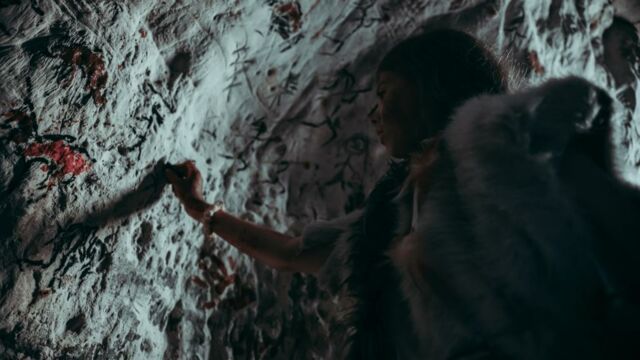For years, researchers have questioned why so many of the world's oldest works of art were found in often pitch black tunnel systems, far from the entrance to the caves.
Discover our latest podcast
Mystical raptures from oxygen deprivation
A recent study from Tel Aviv University reveals that these locations were deliberately chosen because they induced oxygen deprivation and caused cavemen to undergo a condition called hypoxia. Hypoxia can cause symptoms such as shortness of breath, headaches, confusion, and a rapid heartbeat, which can lead to feelings of euphoria, near-death experiences, and out-of-body sensations. The team of researchers believes it would have been 'very similar to what happens when you take drugs,' reports the Times. The study says:
It appears that Upper Paleolithic people barely used the interior of deep caves for daily, domestic activities. Such activities were mostly performed at open-air sites, rock shelters, or cave entrances.
While depictions were not created solely in the deep and dark parts of the caves, images at such locations are a very impressive aspect of cave depictions and are thus the focus of this study.
Symbologically important sites
According to Ran Barkai, co-author of the study, cavemen used fire to light up caves, which contributed to reduce oxygen levels. Painting under these conditions was done on purpose and as a way to connect to the cosmos, explains the researcher.
'It was used to get connected with things,' Ran Barkai told CNN, adding that cave painters often viewed the rock face as a portal connecting their world to the underworld, which was associated with prosperity and growth. The researcher also suggested that the cave paintings may have been used as a prop in some sort of initiation rite.
The fascinating cave paintings, which date from around 40,000 to 14,000 years ago, depict animals such as mammoths, bison and ibex. According to CNN, the study reads:
It was not the decoration that rendered the caves significant but the opposite: the significance of the chosen caves was the reason for their decoration.
The study focused on decorated caves in Europe, mainly Spain and France. It was published last week in the scientific journal Time and Mind: The Journal of Archeology, Consciousness, and Culture.















